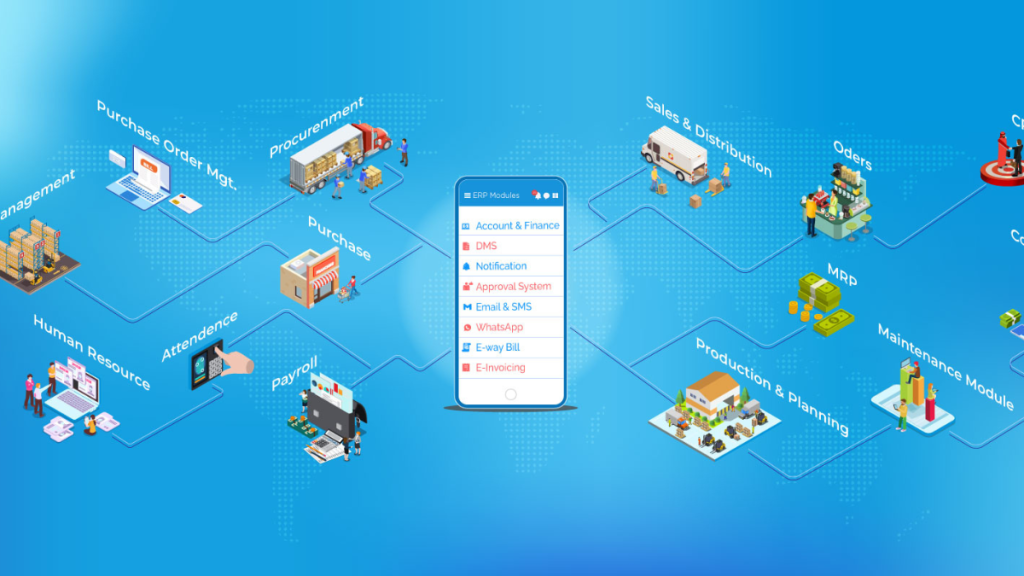In the age of information, businesses find themselves grappling with an overwhelming volume of data, often scattered across disparate systems and departments. This data chaos can hinder decision-making, impede efficiency, and stifle growth. Enter Enterprise Resource Planning (ERP) solutions – the unsung heroes in the battle against data chaos. In this exploration, we delve into how ERP solutions serve as the architects of order, bringing structure and clarity to the chaos of information overload.
Understanding the Data Chaos Dilemma
Data Proliferation:
The digital era has ushered in an era of data abundance. Organizations generate and accumulate data at an unprecedented rate, ranging from customer interactions and sales figures to operational metrics and employee records.
Disparate Data Silos:
Data often resides in silos, isolated within different departments or systems. Siloed data hampers collaboration and prevents organizations from harnessing the full potential of their information resources.
ERP Solutions as Architects of Order
Unified Data Repository:
At the core of ERP solutions lies a unified data repository. ERP systems consolidate data from various departments – finance, HR, supply chain, and more – into a centralized database. This single source of truth eliminates data silos and ensures consistency across the organization.
Streamlined Processes:
ERP solutions streamline business processes by automating routine tasks and workflows. This automation not only enhances efficiency but also reduces the risk of errors that can arise from manual data entry.
Real-Time Insights:
One of the key strengths of ERP is its ability to provide real-time insights. Decision-makers can access up-to-the-minute data on performance metrics, financial standings, and other critical information, empowering them to make informed and timely decisions.
ERP and Integration of Disparate Systems
Seamless Communication:
ERP solutions act as communication bridges, connecting disparate systems within an organization. Whether it’s integrating financial software, CRM tools, or supply chain management, ERP fosters seamless communication between different functions.
Interdepartmental Collaboration:
The collaborative nature of ERP extends beyond data integration. It promotes interdepartmental collaboration by providing a shared platform for employees across various functions to work together, fostering a culture of transparency and teamwork.
Data Security and Compliance
Data Security Measures:
Data chaos often brings concerns about security. ERP solutions incorporate robust security measures to protect sensitive business information. Access controls, encryption, and regular security updates are integral components of ERP systems.
Ensuring Compliance:
Compliance with industry regulations and standards is a non-negotiable aspect of business operations. ERP solutions are designed to facilitate and ensure compliance by providing tools to track, report, and adhere to regulatory requirements.
Overcoming Data Chaos Challenges with ERP
Scalability for Growth:
As businesses grow, so does their data. ERP solutions are scalable, adapting to the evolving needs of an organization. Whether you’re a small startup or a large enterprise, ERP can grow with you, accommodating expanding data volumes.
User-Friendly Interfaces:
Navigating through data chaos is futile if users find the system complex or intimidating. ERP solutions prioritize user-friendly interfaces, ensuring that employees can efficiently use the system with minimal training.
Continuous Improvement:
ERP vendors are committed to continuous improvement. Regular updates and new features are rolled out to address emerging challenges and leverage technological advancements, keeping the ERP system at the forefront of data management.
Conclusion: Bringing Harmony to Data Chaos
In conclusion, ERP solutions stand as beacons of order in the tumultuous sea of data chaos. By unifying data, streamlining processes, fostering collaboration, and addressing security concerns, ERP systems bring a sense of harmony and control to organizations drowning in information overload.
As businesses master data chaos with ERP solutions, they not only regain control of their information but also empower themselves to harness the true potential of data-driven decision-making. In the intricate dance of business operations, ERP emerges as the choreographer, orchestrating order and coherence, ensuring that every data point contributes to the symphony of organizational success.
